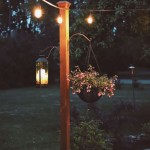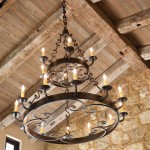How to Run Electrical for an Outdoor Kitchen
An outdoor kitchen can significantly enhance your enjoyment of the great outdoors. However, before you can start grilling, chilling, and entertaining, you must ensure your kitchen is properly wired for power. Running electricity to an outdoor kitchen requires careful planning and adherence to safety codes to ensure a functional and safe space. This article outlines the essential steps to successfully tackle this project.
1. Planning and Permitting
Before any digging or wiring begins, meticulous planning is paramount. This involves determining the specific electrical needs of your outdoor kitchen, including appliances, lighting, and outlets. Consider the wattage of each appliance and calculate the total power requirements. A certified electrician can provide valuable input on sizing the electrical panel and choosing the right wiring for your needs.
Next, it's crucial to obtain the necessary permits from your local building department. These permits ensure that your electrical work complies with local safety codes and regulations. Providing detailed plans and specifications will help expedite the permitting process.
2. Selecting the Power Source
The choice of power source depends significantly on the location of your outdoor kitchen and its proximity to your home's electrical panel. Here are two common approaches:
-
Direct Wiring:
This involves running dedicated electrical wiring from your home's electrical panel to the outdoor kitchen. It offers the most reliable power and is often the preferred option for larger kitchens with high wattage appliances. Direct wiring requires a qualified electrician to install a new circuit breaker in the panel. -
Outdoor Receptacle:
If the outdoor kitchen is close to an existing outdoor outlet, you may be able to draw power from that source. However, ensure that the existing circuit can handle the additional load of your outdoor kitchen appliances. Consult an electrician to determine the feasibility of this option.
Once you've chosen the power source, you'll need to determine the appropriate gauge of wire. This depends on the distance between the power source and the outdoor kitchen and the total amperage required. A larger gauge wire is necessary for greater distances and higher amperage demands.
3. Installing the Electrical Conduit
For direct wiring, you'll need to run electrical conduit from the electrical panel to the outdoor kitchen. Conduit protects the wiring from damage and provides a safe and organized route for the electrical system. Common materials for outdoor conduit include PVC (polyvinyl chloride) and metal conduit.
The conduit must be buried underground at a specific depth, typically 18 inches, to protect it from damage. It's essential to follow local and national electrical codes during installation. The conduit should be installed with appropriate fittings and securely anchored to prevent movement or damage.
4. Running the Wiring and Connecting Appliances
Once the conduit is installed, the electrical wiring must be run through it. Use the appropriately sized wire for the electrical load, and ensure the wiring is properly terminated at both ends. This involves connecting the wires to the circuit breaker in the electrical panel and to the appliances and outlets in the outdoor kitchen. It's crucial to carefully follow the manufacturer's instructions for each appliance's wiring and make sure all wire connections are secure and properly insulated.
When connecting appliances, it's important to consider the grounding requirements. Grounding protects against electrical shock, and all electrical components in an outdoor kitchen should be properly grounded. A dedicated ground wire should be installed in the conduit, along with the hot and neutral wires, and connected to the appliances and outlets.
5. Inspection and Final Touches
Once all wiring and connections are completed, it's essential to have a qualified electrician inspect the installation. The electrician will verify that the work meets all applicable codes and regulations. They will also test the electrical circuits to ensure they are working properly and safely.
After the inspection, it's time to finalize the outdoor kitchen by installing the appliances, countertops, and other necessary components. Ensure that the installation is level and secure and that all electrical components are properly protected from the elements, such as rain, snow, and extreme temperatures.
By following these steps, you can successfully run electricity to your outdoor kitchen and enjoy this valuable addition to your home for years to come. Remember to prioritize safety throughout the process, consult with a qualified electrician for guidance and inspections, and comply with all local codes and regulations.

How To Install Electrical S In Your Outdoor Kitchen

How To Build A Diy Outdoor Kitchen Family Handyman
:strip_icc()/101254540-1ca2fd0502e04d00aed8e88166f05f34.jpg?strip=all)
Diy Outdoor Kitchen Plumbing
:strip_icc()/SCP_256_04-18c3d667897b469dada4e70dae1f0f21.jpg?strip=all)
Diy Outdoor Kitchen Plumbing

Diy Outdoor Kitchen At Home With The Barkers
:strip_icc()/SCP_257_05-086cfc23baf44408b2272af66ffdb944.jpg?strip=all)
Diy Outdoor Kitchen Plumbing

32 Outdoor Kitchen Ideas Perfect For Entertaining Appliances Diy

Designing An Outdoor Kitchen Garden

Running Electric For Switch And Lights S Bbq Island Outdoor Living Space Kitchen Projects

Diy Outdoor Kitchen Project 3 Best Methods You Should Know







